AUTHORITY
STATEMENT OF INTENT
FOREWORD
DOCUMENT CONTROL
CONTENTS
CONTENTS (continued)
CONTENTS (continued)
CONTENTS (continued)
1 INTRODUCTION
1.1 PURPOSE
1.2 SCOPE
1.3 APPLICABILITY
1.4 RATIONALE
1.5 DOCUMENT STRUCTURE
1.6 CONVENTIONS AND DEFINITIONS
1.7 PATENTED TECHNOLOGIES
1.8 REFERENCES
2 OVERVIEW
2.1 ARCHITECTURE
2.2 SUMMARY OF FUNCTIONS
2.3 INTERNAL ORGANIZATION OF SUBLAYER
3 CONVOLUTIONAL CODING
3.1 OVERVIEW
3.2 GENERAL
3.3 BASIC CONVOLUTIONAL CODE SPECIFICATION
3.4 PUNCTURED CONVOLUTIONAL CODES
4 REED-SOLOMON CODING
4.1 OVERVIEW
4.2 GENERAL
4.3 SPECIFICATION
4.4 DISCUSSION
5 CONCATENATED CODING
6 TURBO CODING
6.1 OVERVIEW
6.2 GENERAL
6.3 SPECIFICATION
7 LOW-DENSITY PARITY-CHECK CODING
7.1 OVERVIEW
7.2 GENERAL
7.3 LOW-DENSITY PARITY-CHECK CODE WITH RATE 223/255
7.4 LOW-DENSITY PARITY-CHECK CODE FAMILY WITH RATES 1/2, 2/3, AND 4/5
8 FRAME SYNCHRONIZATION
8.1 OVERVIEW
8.2 THE ATTACHED SYNC MARKER (ASM)
8.3 ASM BIT PATTERNS
8.4 LOCATION OF ASM
8.5 RELATIONSHIP OF ASM TO REED-SOLOMON, TURBO, AND LDPC CODEBLOCKS AND CODEWORDS
8.6 ASM FOR EMBEDDED DATA STREAM
9 PSEUDO-RANDOMIZER
9.1 OVERVIEW
9.2 PSEUDO-RANDOMIZER DESCRIPTION
9.3 SYNCHRONIZATION AND APPLICATION OF PSEUDO-RANDOMIZER
9.4 SEQUENCE SPECIFICATION
9.5 LOGIC DIAGRAM
10 TRANSFER FRAME LENGTHS
10.1 OVERVIEW
10.2 GENERAL
10.3 CASE 1: UNCODED
10.4 CASE 2: CONVOLUTIONAL ONLY
10.5 CASE 3: REED-SOLOMON ONLY
10.6 CASE 4: CONCATENATED
10.7 CASE 5: TURBO
10.8 CASE 6: LDPC
11 MANAGED PARAMETERS
11.1 OVERVIEW
11.2 GENERAL
11.3 MANAGED PARAMETERS FOR SELECTED OPTIONS
11.4 MANAGED PARAMETERS FOR CONVOLUTIONAL CODE
11.5 MANAGED PARAMETERS FOR REED-SOLOMON CODE
11.6 MANAGED PARAMETERS FOR TURBO CODE
11.7 MANAGED PARAMETERS FOR LOW-DENSITY PARITY-CHECK CODE
11.8 MANAGED PARAMETERS FOR FRAME SYNCHRONIZATION
ANNEX A SERVICE(NORMATIVE)
ANNEX B SECURITY, SANA, AND PATENT CONSIDERATIONS(INFORMATIVE)
ANNEX C ANNEX TO SUBSECTION 7.3,LOW-DENSITY PARITY-CHECK CODE WITH RATE 223/255(INFORMATIVE)
ANNEX D ACRONYMS AND TERMS(INFORMATIVE)
ANNEX E INFORMATIVE REFERENCES(INFORMATIVE)
ANNEX F TRANSFORMATION BETWEEN BERLEKAMPAND CONVENTIONAL REPRESENTATIONS(INFORMATIVE)
ANNEX G EXPANSION OF REED-SOLOMON COEFFICIENTS(INFORMATIVE)
ANNEX H CHANGES FROM REFERENCES [E2] AND [E3](INFORMATIVE)
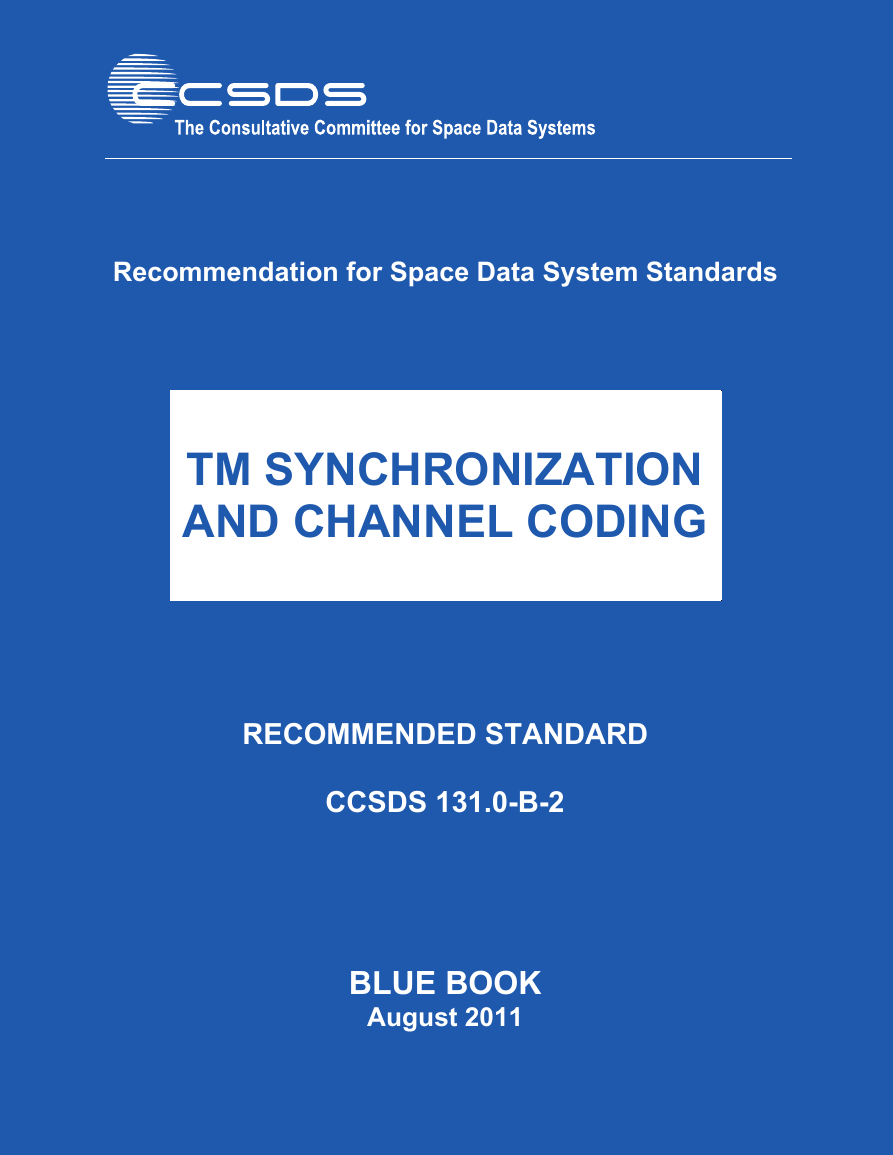

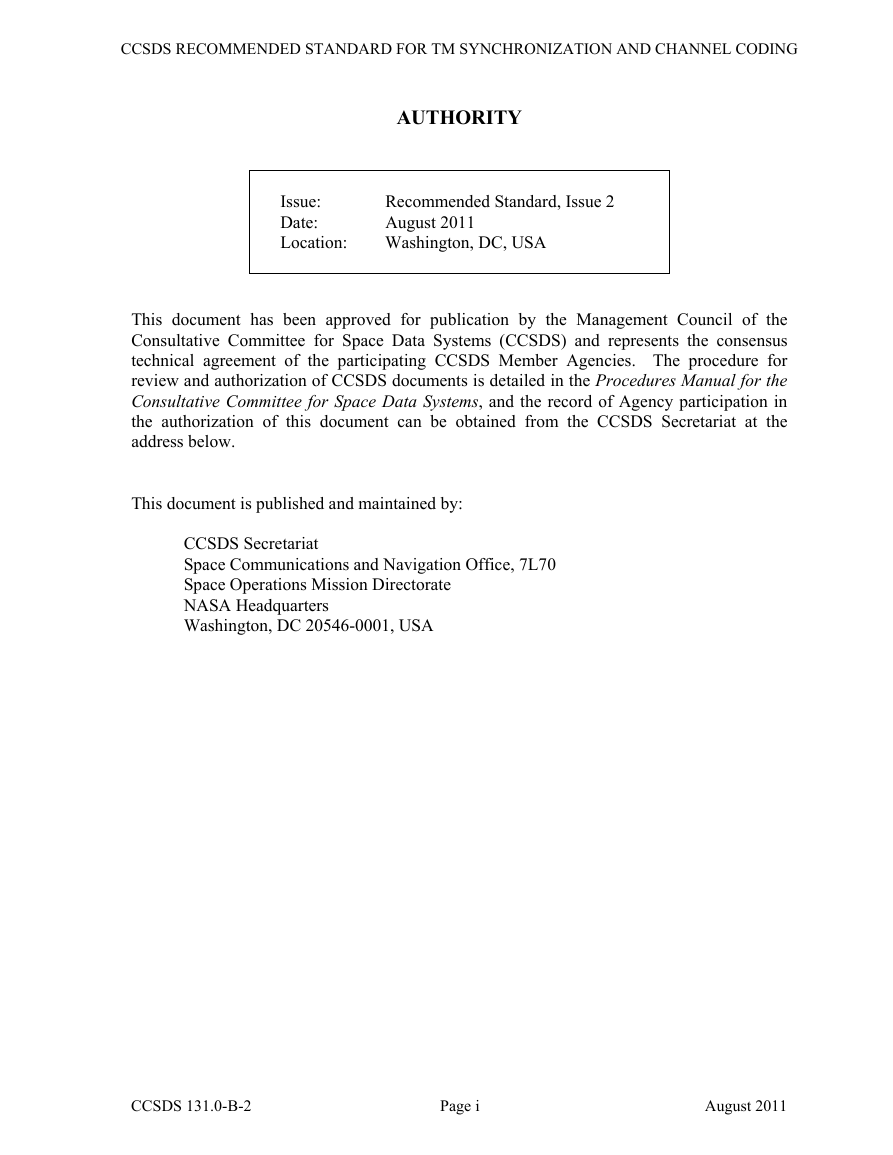
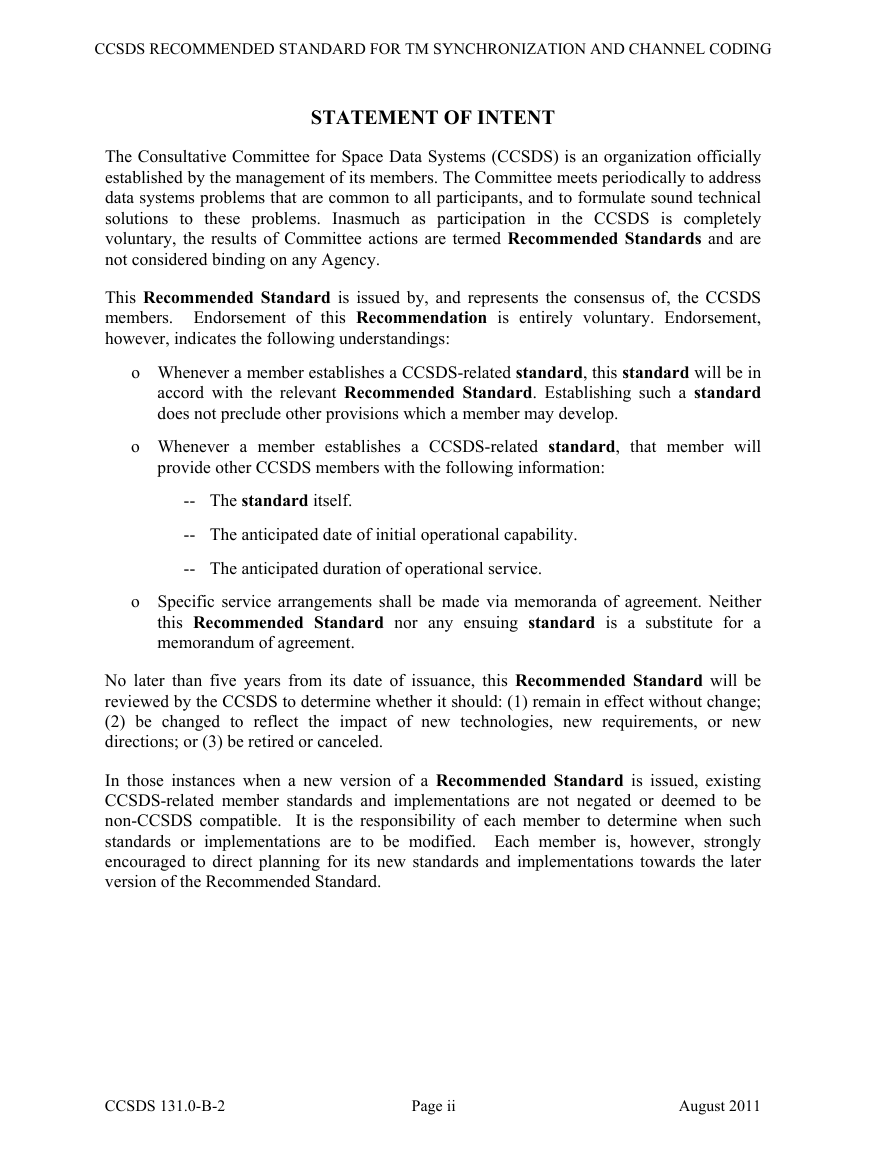
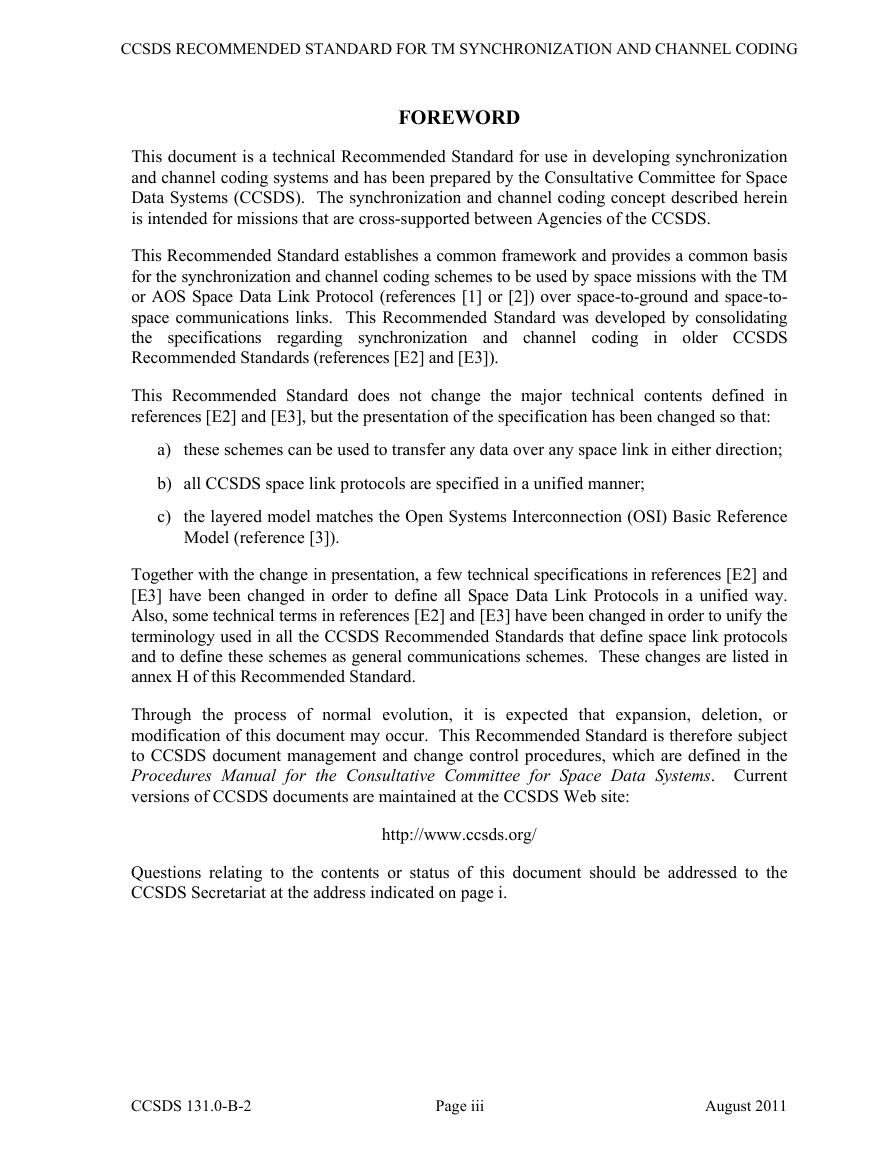
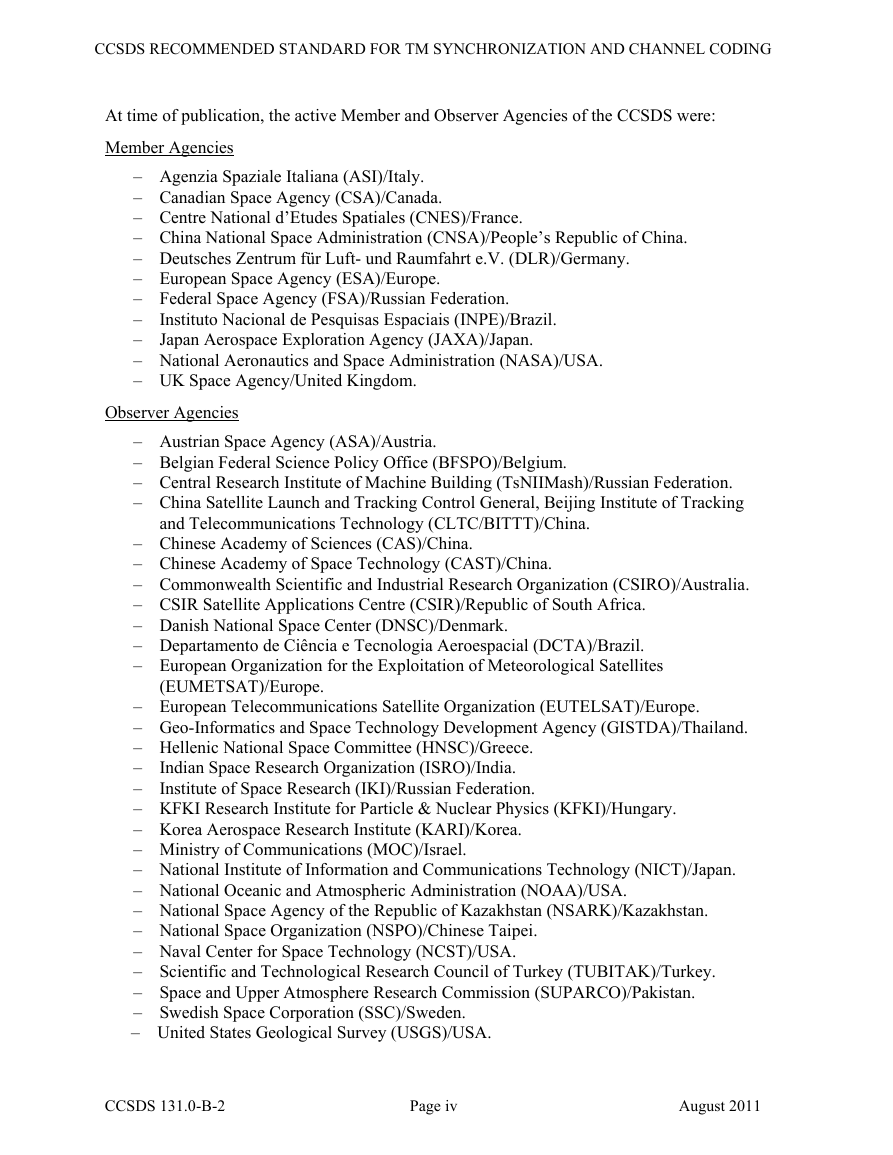

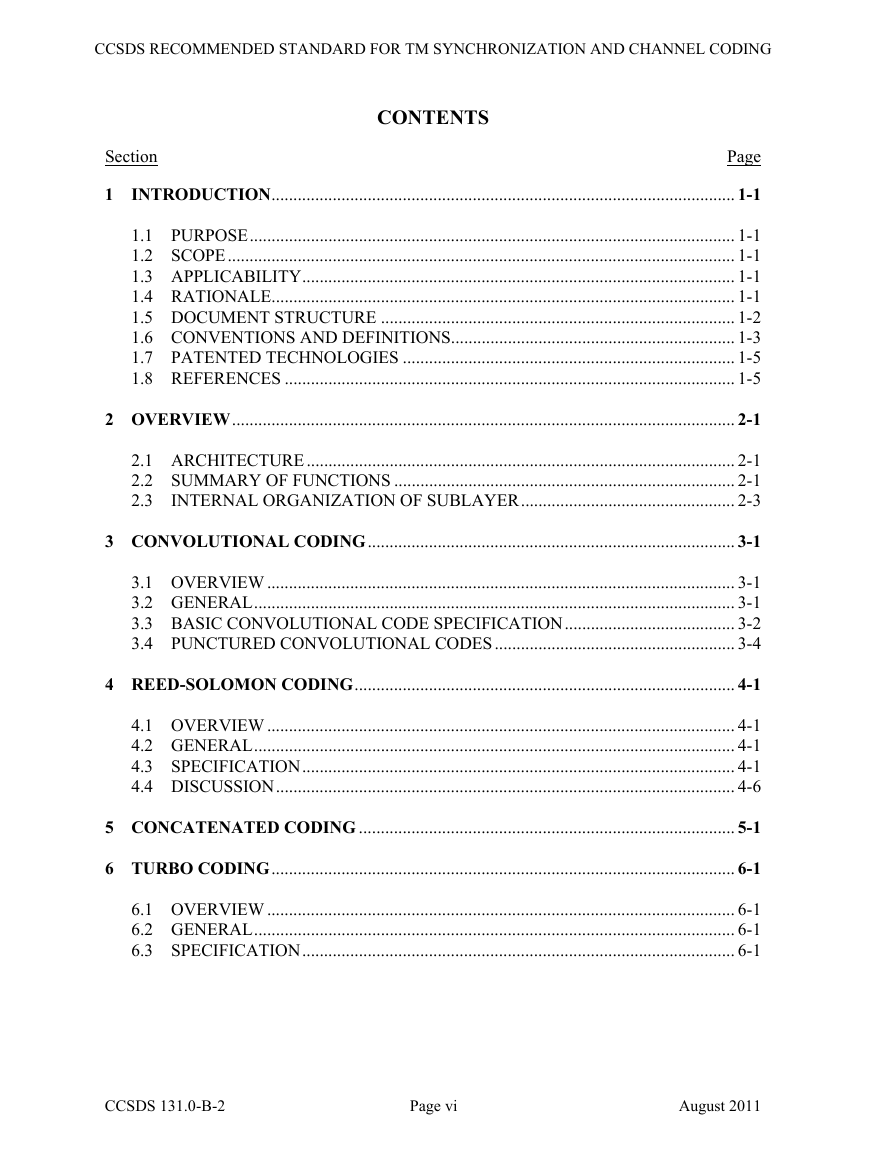








 2023年江西萍乡中考道德与法治真题及答案.doc
2023年江西萍乡中考道德与法治真题及答案.doc 2012年重庆南川中考生物真题及答案.doc
2012年重庆南川中考生物真题及答案.doc 2013年江西师范大学地理学综合及文艺理论基础考研真题.doc
2013年江西师范大学地理学综合及文艺理论基础考研真题.doc 2020年四川甘孜小升初语文真题及答案I卷.doc
2020年四川甘孜小升初语文真题及答案I卷.doc 2020年注册岩土工程师专业基础考试真题及答案.doc
2020年注册岩土工程师专业基础考试真题及答案.doc 2023-2024学年福建省厦门市九年级上学期数学月考试题及答案.doc
2023-2024学年福建省厦门市九年级上学期数学月考试题及答案.doc 2021-2022学年辽宁省沈阳市大东区九年级上学期语文期末试题及答案.doc
2021-2022学年辽宁省沈阳市大东区九年级上学期语文期末试题及答案.doc 2022-2023学年北京东城区初三第一学期物理期末试卷及答案.doc
2022-2023学年北京东城区初三第一学期物理期末试卷及答案.doc 2018上半年江西教师资格初中地理学科知识与教学能力真题及答案.doc
2018上半年江西教师资格初中地理学科知识与教学能力真题及答案.doc 2012年河北国家公务员申论考试真题及答案-省级.doc
2012年河北国家公务员申论考试真题及答案-省级.doc 2020-2021学年江苏省扬州市江都区邵樊片九年级上学期数学第一次质量检测试题及答案.doc
2020-2021学年江苏省扬州市江都区邵樊片九年级上学期数学第一次质量检测试题及答案.doc 2022下半年黑龙江教师资格证中学综合素质真题及答案.doc
2022下半年黑龙江教师资格证中学综合素质真题及答案.doc